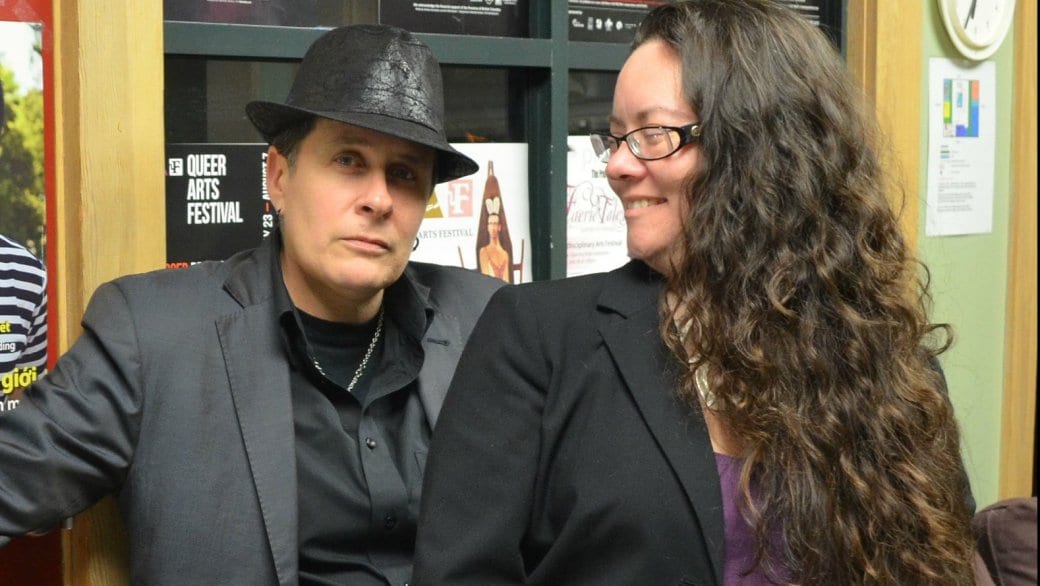Organizers hope a new time slot, a tighter schedule and a big-name visual arts curator will make this year’s Queer Arts Festival (QAF) even more memorable than usual.
Traditionally held over two weeks during Vancouver Pride, organizers have moved the 2016 festival up to June and shortened it to 10 days, to coincide with the anniversary of the 1969 Stonewall Inn riots in Greenwich Village, New York.
The new time slot, while primarily a decision of finance — it brings the festival out of direct competition with other mid-summer events like Pride and into a different funding cycle — allows QAF to tie into the theme of Stonewall, which organizers say is consistent with the festival’s mandate.
“By bringing it to Stonewall [season] we’re really putting an emphasis on artists as movement. Artists as activists. Artists as change-makers — and how the visceral power of the arts has a role in changing the world,” says Rachel Iwaasa, the festival’s director of development.
Iwassa and QAF artistic director Shaira (SD) Holman performed a coup last year when they successfully invited internationally-recognized art historian and activist Jonathan Katz to curate the festival’s 2016 visual arts show — “Drama Queer: Seducing Social Change.”
“His vision is so exciting,” Holman says. “To get some of the calibre of people he’s bringing because he’s Jonathan Katz . . . we’re anticipating a pretty huge response.”
One such high-calibre person is Emily Carr alumni Attila Richard Lukacs, who will be showing new works. “I think they are some of the finest paintings done anywhere in the world in the last several years,” Katz says.
Katz has curated exhibits that have caused major waves of contention in the art world, most famously Hide/Seek: Difference and Desire in American Portraiture, which he co-curated for the Smithsonian Institute — the first major American exhibit to focus on queer sexuality as artistic influence.
Twenty-three artists, including visual artist Del LaGrace Volcano who creates “herm” portraits of figures with male and female attributes, have been drawn together by Katz to examine issues of ambiguity and “unresolvable” contradiction in queer art for QAF.
“The new idea around trans is that one is neither fully male nor fully female, but actually a third term — trans — which is about being neither one nor the other,” Katz says. “The idea that somehow we are one thing right down … that identity [is] singular — that seems to us very old fashioned.
“In fact what queerness is, is the acknowledgement that we are born of multiplicity,” he says. “And queer people know this best of all because we lived before we came out — and some of us even after we came out — that multiplicity. Because we were one person with our families, one person at work, one person with our friends, one person at the bar.
“In other words, identity was never singular. That’s what the show is about,” he says.
In addition to its visual arts exhibit, QAF will feature its usual community-building events, such as MACHiNENOiSY Dance Society’s annual skill-building program for queer youth, as well as a new initiative this year from the frank theatre, examining racism in the queer community. Organizers are also looking forward to hosting Australia’s Acacia Quartet, as it performs “String Quartet: An AIDS Activist’s Memoir” by composer Lyle Chan.
With an annual grant from the City of Vancouver and more stable funding from Canadian Heritage and the BC Arts Council, QAF has been finding its footing financially, though more community support would always be appreciated.
The community’s support was particularly appreciated in 2013, when Canadian Heritage suddenly cut QAF’s grant, which had previously accounted for 17 percent of the festival’s funding. After a public outcry, the government reinstated 75 percent of the grant and has increased it every year since.
“The support of the community has been really key in that,” Holman says. “It was because of the huge outpouring of support from the community that we did get our Heritage funding back.”
But QAF isn’t necessarily out of the woods, Iwaasa warns. If people want to see government bodies give more money to queer arts, they have to donate too, she says. “That shows the councils and the juries that this organization has community support.”
“When you donate to a festival you’re doubling your money,” she says, “because you get matched in a sense by the government. It’s not a one-to-one, but there’s definitely a direct correlation. And our growing stability has everything to do with the direct support that we see from the community. So we ask our supporters to keep it up.”
(Editor’s note: This article was corrected on April 27, 2016 to correctly describe visual artist Del LaGrace Volcano’s work.)
Queer Arts Festival
June 21–30, 2016
queerartsfestival.com

 Why you can trust Xtra
Why you can trust Xtra


